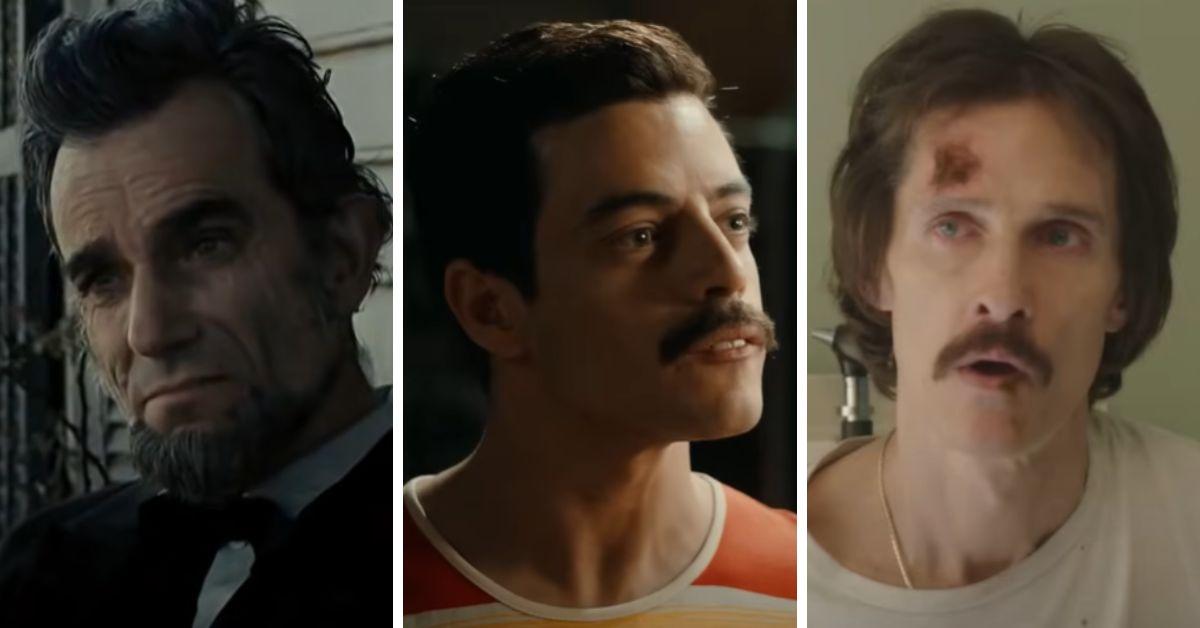News
Transformative Actors: Embracing Nightmarish Changes to Portray Real-Life Characters on Screen

Celebrities Who Became Real-Life Icons: Rami Malek and Others
In the realm of cinema, certain actors take on the formidable challenge of transforming into real-life characters, often putting their bodies and minds to the test. This piece explores some notable examples of stars who have undergone drastic changes to portray historical figures.
Ashton Kutcher boldly stepped into the shoes of tech mogul Steve Jobs in the movie “Jobs.” During its premiere at Sundance, he reflected on the daunting task of embodying Jobs, sharing his fears about facing harsh criticism so soon after the tech giant’s passing. To prepare for the role, Kutcher immersed himself in hours of footage to study Jobs’ unique mannerisms and even adopted a fruitarian diet, ultimately leading to a hospitalization just before filming commenced.
Daniel Day-Lewis was handpicked by director Steven Spielberg to play Abraham Lincoln in “Lincoln,” a decision influenced by Day-Lewis’ physical features. Spielberg noted that the actor’s natural resemblance made him ideal for the role, enhanced by minimal makeup to create an authentic look.
Denzel Washington faced his own apprehensions when cast as civil rights leader Malcolm X in Spike Lee’s 1992 film. Despite receiving acclaim for his performance, Washington admitted to feeling the weight of the role and its heavy themes. The controversy surrounding the film heightened tensions for both Washington and Lee, adding to the complexity of their execution.
Eddie Redmayne dazzled audiences with his portrayal of Stephen Hawking in “The Theory of Everything.” The actor underwent significant changes for the part, navigating comparisons with Benedict Cumberbatch, who had previously played Hawking in a BBC production. Redmayne expressed admiration for Cumberbatch while maintaining focus on his own portrayal of the genius physicist.
Johnny Depp took on the daunting role of notorious crime figure James “Whitey” Bulger in “Black Mass.” Depp approached the character with depth, eschewing a simple gangster depiction to delve into Bulger’s complexities. Despite the film’s excitement among audiences, Bulger’s attorney critiqued the portrayal, arguing that it missed crucial aspects of the crime boss’s story.
Leonardo DiCaprio transformed into the morally ambiguous Jordan Belfort in “The Wolf of Wall Street.” To understand the character better, DiCaprio worked closely with Belfort, learning firsthand about the lifestyle depicted in the film. Belfort’s guidance included insights on portraying drug use authentically, leading to memorable moments captured on screen.
Matthew McConaughey committed to a grueling physical transformation for “Dallas Buyers Club,” losing 50 pounds to effectively embody Ron Woodroof. Adhering to a stringent diet, McConaughey emphasized the importance of authenticity in his performance, ensuring that his appearance matched the character’s real-life struggles.
Meryl Streep garnered significant acclaim for her portrayal of Margaret Thatcher in “The Iron Lady.” Streep embraced the challenge of portraying the former Prime Minister, aiming to channel Thatcher’s remarkable life and legacy through careful preparation and attention to detail.
Michelle Williams tackled the role of Hollywood icon Marilyn Monroe in “My Week with Marilyn.” Williams found the journey both exciting and daunting, investing considerable time in mastering Monroe’s persona to deliver an authentic performance.
Natalie Portman received accolades for her role as Jackie Kennedy in “Jackie.” To accurately portray the beloved First Lady, Portman focused on mastering Kennedy’s voice and demeanor, reflecting her commitment to authenticity and detail.
Rami Malek committed deeply to embodying rock legend Freddie Mercury in “Bohemian Rhapsody.” His preparation included working with a choreographer and donning false teeth to replicate Mercury’s iconic look and sound. Malek described the experience as his most challenging role, but one that ultimately proved rewarding.
Ryan Gosling’s exploration of Neil Armstrong’s life in “First Man” revealed a layered approach to character development. He aimed to portray Armstrong’s humility, underscoring the astronaut’s complex identity beyond the title of “American hero.”
These actors represent a select group who have transformed themselves in pursuit of capturing the essence of larger-than-life figures, each bringing their unique interpretation to the roles they portray. Their commitment reflects not only their craft but also a deep respect for the real-life individuals they depict.
